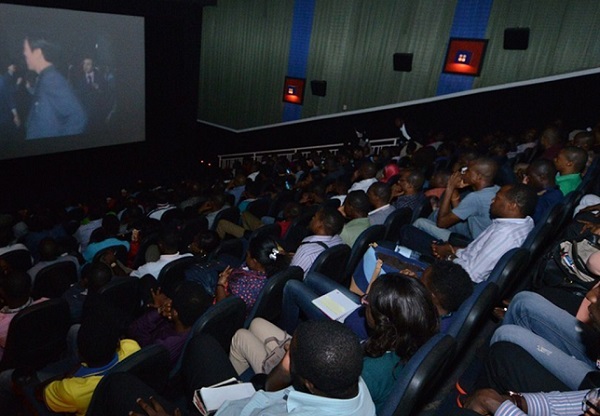This study looks into the transformational impact of remote or home learning and gamification on education, with a subtle focus on South Africa and Nigeria as notablecases in Africa. The findings arejuxtaposed with Finland’s renowned education system, premised on its progressive principles. The consistent growth of remote learning technologies, showcased by South Africa’s initiatives, speaks to unique challenges in the African educational space.
On the other hand, gamification becomes evident as a superior tool to improve student engagement and motivation, as demonstrated by Nigeria’s innovative platforms. Theholistic student-centric approachfound in Finland’s educationalexcellence offers worthy insights intothe global trajectory of educational technology. This piece lays emphasis on the similarities in successful education models, considering adaptability, inclusivity, and the deliberate infusion of technology.
As we approach the future of education, collaboration, and cross-cultural learning are vital to the creation of a universally accessible, acceptable, and engaging learningenvironment.
The swift evolution within the educationspace premised on the integration of remote learning and gamification has been received as a powerful propeller ofpositive change. This study considersthe enormous improvements of these educational innovations, with its uniquefocus on a case study from Africa juxtaposed with the noteworthy Finisheducation system.
Advertisement
Moreover, Education in Africa has since encountered multi-pronged inhibitions, some of which are infrastructural stops, unequal access to quality, and differingeconomic conditions across its constituent Nations. Despite, our experience in recent times (especially post-COVID-19), the acceptance of remote education technologies has become a force to reckon with. This offers humungous options to overcome long-standing roadblocks and providesa breath of freshness across the continent.
Additionally, many African nations have been bequeathed a range of bottlenecks in the delivery of quality education. This includes limitations inaccess to schools, precisely in rural areas, insufficient infrastructure, and economic inequality among regions. The foregoing has led to an uneven spread of educational resources. A couple of these challenges add to a notable gap in educational outcomes, lowering the overall development of the continent (which feels like a rigmarole maze).
Nevertheless, the remote learning option offers a promising contribution to addressing the challenges faced by African education. Rising digital platforms, online resources, and connectivity solutions have helped bridge educational gaps. These solutions rise above geographical barriers, offering access to superioreducational materials and propelling innovative learning environments.
Advertisement
Besides, South Africa epitomizes the transformational influence of e-learning trends. The South African National Research and Education Network (SANReN) continues to play a notablerole in supporting continuous research and education. E-learning platforms like Siyavula (seeya’voola) demonstrate the country’s determination to advance education technology. Siyavula offersaccessible and top-quality learning resources towards a more inclusive and efficient education system.
Furthermore, the South African push in the direction of remote learning revealsa broader trend across the continent. This leads us to more specificapproaches to some remote learning initiatives and examples. Also, we will look into a few innovative approaches and their significance on education in Africa. As well, we will delve into the distinct juxtaposition of these advancements with the celebratededucation system of Finland. This offerstreasured insights into the future of education across the globe.
Foremost, we discuss Gamification, the infusion of game features into non-game contexts. This emerged as a distinct force in creating neweducational narratives. Its innovative process leverages the motivation and engagement elements of games to improve the learning experience across various educational settings. We will look at the impact of gamification in education, some attending benefits and challenges. We then wrap up with thecase of Finland compared with a country in Africa, to showcase the global dynamics of this educational revolution.
Some benefits of gamification in the Education space include Increased Engagement. Gamification has a grip on learners’ attention by bringing alongelements such as competition, rewards, and interactive narratives that make for an intrinsically engaging and fun learning process. Another plus isEnhanced Retention. Game-tailored learning often includes repeated interactions and hurdles to favorreinforcement. This spurs the retention of information through experiential learning. We also have Motivation and Progression as a unique benefit. The infusion of rewards or points and progress monitoring encourages a feeling of achievement, propelling learners to actively participate and make measurable progress in their studies. The last on our list isAdaptability. Gamification lets us tailorlearning experiences, and accommodate diverse learning styles and paces through flexible challenges and well-thought-out content.
Advertisement
Whereas, some challenges in the implementation of Gamification include Evaluating Fun and Educational Content. Reaching the right blend of the infusion of entertaining elements and educational content is strategic to safeguard the effectiveness of gamification. Also, we face issues withTechnology Accessibility. The success of gamified platforms rests on technology access, which could result in delivery bottlenecks in regions with limited digital infrastructure. With Sustainability, keeping learnersinterested over time calls for constantinnovation and regular updates to prevent gamification from becoming boring.
Let us now consider the Finisheducation system, widely accepted for its student-centric and innovative approach. A favorite quote has said that you can’t lead him if you don’t love him. This offers a compelling contrast to the inhibitions faced by many African nations. While Finland focuses onexperiential and collaborative learning, some African countries are going withgamification to close gaps in traditional education. Finland’s success is in its well-rounded education model, which prioritizes creativity and critical thinking. However, the gamification opportunitiesin Africa show a promising trajectory, with initiatives geared toward making learning more accessible and enjoyable.
We will consider Finland, which hasconstantly ranked among the top performers in global education assessments. This continues to triggerinternational interest in seeking to decipher its unique process into education. This analysis considersnotable areas of Finland’s educational system. It then compares them with larger global trends and challenges encountered by other nations, including those in Africa.
1. Holistic Pedagogical Philosophy in Finland: Finnish education gives priority to whole-person development above standardized testing (like WAEC in West Africa). The curriculum pays more attention to creativity, critical thinking, and collaborative learning. Compared with a global context, several countries, propelled by performance metrics, focus on standardized testing, whileneglecting skill development from a broader view.
Advertisement
2. Teacher Empowerment and Professionalism in Finland: Teachers in Finland go through rigorous training and enjoy a high level of autonomy in the classroom. This vested trust in educators allows innovation and a commitment to continuous improvement. Looking at a global context, in some regions, teaching islimited through strict curricular guidelines and standardized testing, zeroing educators’ autonomy.
3. Minimal Standardized Testing in Finland: There are no standardized tests until the end of high school, rather a focus on student welfare and customized learning. Juxtaposed with the globe, several education systems heavily depend on standardized testing, which leads to stress for students and a strealined curriculum.
Advertisement
4. Equality in Education in Finland: The Finnish system promotes equality by minimizing socio-economic differences. Schools receive fair-mindedfunding, and there are almost no private schools. From a global comparative,educational inequality persists in various countries, with variations in funding, resources, and educational turnout.
5. Focus on Well-being in Finland: Student well-being is a priority, with minimal homework and an emphasis on outdoor activities. The aim is to create a positive and supportive learning environment. In the global context, well-being is gaining attention, but academic pressures and lack of resources can stall its implementation.
Advertisement
While Finland exemplifies educational excellence, some African nations are grappling with challenges such as infrastructure limitations, unequal access, and economic constraints. However, innovative initiatives and the adoption of technology, like e-learning platforms, showcase efforts to enhance education in Africa. Finland’s education system stands as a global model for excellence, consistently ranking at the top in international assessments. Several pillars support the success of Finland’s method of education, molding a system that prioritizes holistic development, equality, and teacher professionalism.
1. Holistic Learning Environment – Focus on Holistic Development –Finnish education stresses a comprehensive method of learning, building both academic skills andcritical thinking, creativity, and social competencies. – Play-Based Early Education – The early years focus on play-based learning, promoting curiosity and social skills necessary for future academic success.
Advertisement
2. Teacher Professionalism and Autonomy – Highly Educated Teachers– Finland mandate teachers to hold a master’s degree, to ensure a deep understanding of pedagogy and subject matter. – Teacher Autonomy – Educators enjoy considerable autonomy in the classroom, allowing them to customizelessons to their students’ needs whilepromoting innovative teaching methods.
3. Minimal Standardized Testing – Delayed Introduction of Testing –Standardized testing is introduced only at the end of high school, lettingstudents focus more on learning than exams. – Teacher Assessment –Teachers make use of continuous assessment and feedback to gauge student progress, lowering the pressure linked with high-stakes exams.
4. Equality in Education – Equitable Funding – All schools in Finland receive similar funding, regardless of their location or socio-economic status. This reduces educational disparities. – No Private Schools – Finland does not havea significant presence of private schools, further strengthening the commitment to offering quality education across schools.
5. Student Well-being: – Emphasis on Well-being – Finland emphasizes the importance of student well-being. Schools place priority on a balanced workload, minimal homework, and outdoor activities to promote physical and mental health. – Positive Learning Environment – Creating a positive and supportive learning environment is at the core of the Finnish system, adding to students’ overall happiness and engagement.
6. Collaborative Learning Culture: – Cooperative Learning – The education system promotes collaboration abovecompetition, developing an awarenessof community and shared responsibility among students. – Teacher Collaboration – Teachers often work together on lesson planning and professional development, building a culture of continuous improvement.
7. Continuous Learning and Adaptation: – Professional Development – Teachers work hard tocontinuously develop professionally.They stay abreast of the latest pedagogical practices and educational research. – Adaptability – The system syncs with societal changes and educational research, promoting relevance and effectiveness in a dynamic world.
In conclusion, remote learning and gamification have ushered in transformative possibilities for education globally. By examining the experiences of African nations, particularly South Africa and Nigeria, and comparing them with Finland’s esteemed education system, we glean insights into the multifaceted impact of these innovations. This exploration serves as a testament to the global pursuit of leveraging technology to provide quality and inclusive education, ensuring that students worldwide are equipped with the skills and knowledge necessary for the challenges of the future.
Thank you for the investment in time, and I am open to discussions on moving these thoughts forward. To be alerted each time I create a new post, follow myMedium: https://medium.com/@roariyo and LinkedIn: https://www.linkedin.com/in/olufemi-ariyo-923ba6130/ or send an email to [email protected]






